Formula Development for Baby Sunscreen Products
Bao Fang, An Dong, Bao Xi Jun, Guo Fang
Shanghai Chicmax Cosmetics Co., Ltd., China
Abstract Based on the special users of baby sunscreen cosmetics, the review shows how to choose forms, UV filters and how to match UV filters emphatically according to the characteristics of baby skin. Then the choosing of emollient, emulsifier, soothing, the design of water-resistance and the using of controversial ingredients were introduced. The review shows guidance for cosmetic formulator to design baby sunscreen cosmetics.
Key words sunscreen; baby; formula development
In recent years, with the expansion of the holes in ozone layer and the increase of ultraviolet rays, sunscreen cosmetics have become hot trend in the cosmetic development of industry gradually.[1]Ultraviolet radiation ranges in wavelength from 200 to 400 nm that can be divided into three regions: UVC (200~280 nm), UVB(280~320 nm) and UVA (320~400 nm). UVC can not penetrate Earth’s atmospheric layer, and it poses no threat to human, animal or plant life on earth. UVB rays can reach only the skin’s epidermis and cause erythema.UVB is considered to be the main cause of skin reddening or sunburn. UVA rays have a longer wavelength that can penetrate the middle layer of the dermis, causing hyperpigmentation (dark spots and melasma), saggy skin,wrinkles, and potential risk of skin cancer.[2]
The structure and functions of the skin in adults and children are quite different. The differences include: (1)The dermis of baby’s skin is thinner than in adults, the corneal layer is composed of monolayer cells lacking in transparent layer; (2) Baby’s skin is found to have higher water content and is able to absorb more water and lose excess water faster than adult skin; (3) Baby’s skin has low levels of skin-protecting pigment melanin and a thinner outer layer, Baby’s skin even more prone to sun damage .[3]The characteristics make baby more susceptible to sunburns than adults. Sunburns caused by UV radiation in childhood may increase the risk of developing melanoma later in life.[4]Therefore, more and more people start to pay more attention to baby sunscreen. . According to new product launch statistics from MINTEL, since 2010, the number of baby sunscreen products increased year by year.
In recent years, more and more cosmetic companies are dedicated to the development of baby sunscreen products. The success of baby sunscreen products is influenced by factors such as dosage form, selection of sunscreen agents, matching of sunscreen agents,emulsifiers and grease.
Selection of dosage form
Sunscreens are available in forms such as lotions,creams, sticks, gels, oils, butters, pastes, and sprays. Because of strong carrying capacity, high sunscreen index and easiness to apply, sunscreen lotion is the most popular type of sunscreen in the market. Sunscreen lotion takes emulsified body as the carrier, and can carry various oil soluble and water soluble sunscreens. Sunscreens are mainly divided into O/W emulsion and W/O emulsion.O/W emulsion can make the skin feel fresh and cool, and is only comfortable for daily use due to the limited carrying capability of the dosage form and the moderate protective ability. Regular W/O sunscreen lotion can carry a large amount of sun screen agents with high SPF, but as the oil is on the external surface, it feels greasy or sticky on the skin.
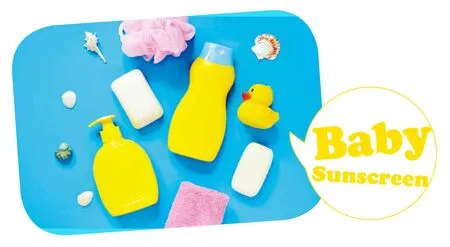
Shake-well W/O lotion uses a large amount of fresh, cool and volatile silicone oil, matched with sunscreen booster and skin-touch conditioner, it can ensure high SPF while making the skin feel fresh and cool. Such type of sunscreen is an excellent choice for water activities or outdoor sports with strong sun protection and water-resistant.
The formula of sunscreen cream also takes emulsified body as the carrier with higher viscosity of lotion, stronger ability to carry sunscreen agents and better sunscreen ability, but it feels thicker and heavier on the skin. It is suitable for dry skin.
In recent years, sunscreen spray is becoming increasingly popular due to its convenience. The primary difference between sunscreen spray versus lotion is the ease and convenience of a spray. People love them because they're easy to apply, fast, and go on evenly. According to the data of the new release of Mintel, since 2010, the number of release of sunscreen aerosol in the world has been ranked among top 3. Currently, sunscreen spray is mainly divided into two groups: one is ethanol-based sunscreen(EBS) spray, and the other is emulsified sunscreen spray.
EBS spray takes ethanol as the carrier, which looks apparent and with medium above protectiveness,convenient to use, but this form makes the skin feel greasy, and it is not suitable for consumers who sensitive to ethanol. EBS spray takes sunscreen lotion as the internal material, matched with spray packaging material.It is convenient to use, which makes the skin feel fresh and cool and is applicable for all skin types. But it is with relatively high cost.
Sunscreen oil is the oldest sunscreen cosmetic product form, with simple manufacturing process, good water resistance and simple application but the thin and discrete oil membrane could not achieve good protection.[5]
Sunscreen sticks add some solid wax ingredients into the base of sunscreen oil. Conveniently sized in lip balm style tubes, sunscreen sticks are pocket-sized that allow for a mess-free, hands-free way to easily apply sunscreen.Perfect for use on the face, your hands never have to touch the sunscreen and make it easy to reapply whenever needed. The small size allows customers to carry their personalized sunscreen anywhere, and easily fits into the pockets of pants and shorts, as well as small handbags. But it makes the skin sticky and uncomfortable especially in hot summer. So it is not suitable for large area skin.
Sunscreen gel is divided into water soluble gel and oil soluble gel but water soluble gel is dominant. Most sunscreen gel makes the skin feel fresh and cool, which looks transparent and makes users feel extremely comfortable to use. But due to the restriction of the formulae and weak protectiveness, the sunscreen gel is developed slowly. In recent years, some scholars try to improve this form of sunscreen products and have produced thermosensitive sunscreen gel with stronger protectiveness.[6]
Sunscreen cushion and roller balls gradually stand out because they are convenient to use. Sunscreen lotion, cream and spray are the key children’s sunscreen cosmetics, as shown in Figure 1, from 2010 to 2017,according to the statistics of the new releases of MINTEL,the top 5 children’s sunscreen products are: lotion, cream,spray, cushion and roller balls, mostly lotion products.Regarding to the above-mentioned forms, it is easy to discover that lotion sunscreen products have become the first choice among children’s sunscreen cosmetics due to the flexibility of formula, wide protective scope, fresh and cool skin feeling and relatively low cost. Secondly,spray that takes lotion as the internal material and is more convenient to use has also been favored my more and more consumers.
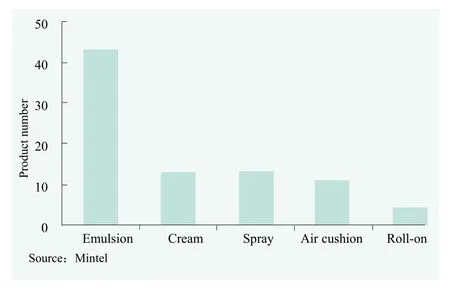
Figure 1. Top 5 forms of baby suncare cosmetics, 2010~2017
Selection of sunscreens
Sunscreen agent is the core of sunscreen makeup formula, having critical influence on the performance of sunscreen products. The selection of sunscreen agent for the development of children’s sunscreen cosmetics is stricter than that of adults’.
First of all, safe and mild sunscreen agents that have undertaken long-term market inspection should be selected. As for the safety and mildness of sunscreen agents, preliminary screening can be carried out in accordance with “Safety and Technical Standards for Cosmetics” (2015 Edition), CIR raw material evaluation and SCCS opinion. Secondly, as all tests for approval of sunscreen agent are conducted by taking adults as the benchmark, while there have big differences between the skin of children and adults, there can’t be treated as the same, therefore, when choosing the sunscreening agents for children’s sunscreen cosmetics, sunscreen agents highly used in the market products should be selected as first priority, ensuring the safety and mildness of products.Take China as example, 27 varieties of sunscreening agent were approved in “Safety and Technical Standards for Cosmetics” (2015 Edition), but there were only more than ten varieties of frequently-used sunscreen agents.
Secondly, it is better to select sunscreen agents without dispute. Among the dozen varieties of frequentlyused sunscreen agents, although sunscreen products for adults are frequently used, parts of raw materials are still disputable. For example, the safety of benzophenone sunscreen agent has always been controversial, some scholars have conducted skin photo-toxicity tests and skin photo-allergy tests targeted at the controversial issue.[7]Research found that benzophenone sunscreen agent is dangerous to highly sensitive people. Besides, it is held by public opinion that benzophenone-3 can act as an oestrogen-like hormone and can be easily absorbed by the skin. In the development of sunscreen cosmetics for children, this kind of sunscreen agents should not be used.
In the end, we should choose appropriate sunscreen agents according to the requirements on the characteristics and functions of different forms. Through the former two ways of screening, there are on more than ten types of sunscreen agents that can be selected for sunscreen cosmetics for children. On this basis, we should choose appropriate water soluble, oil soluble, solid and liquid sunscreenagents according to the features of the form of developed products, and choose UVA and UVB sunscreenagents according to the protective wave band and characteristics of sunscreen agents.[8]
According to the statistical data of Mintel from 2010 to 2017, as shown in Figure 2, frequently used sunscreen agents in sunscreen cosmetics for children are titanium dioxide, ethyl hexyl methoxy cinnamate, zinc oxide,butyl methoxydibenzoyl methane and octocrilene and so on. Although they are frequently used, parts of these raw materials are still disputable. For example, there are more and more disputes over the safety of nanometre titanium dioxide in the academia, traditionally, it is believed that titanium oxide can only reflect and scatter ultraviolet rays, causing no injury to the skin But many researches find that nanometre titanium oxide can also absorb part of ultraviolet[9]and produce free radicals,which is dangerous to the skin. Disputable raw materials also include the above-mentioned benzophenone-3.According to the rules of choosing sunscreen agents, the above-mentioned disputable raw materials are suggested to be avoided to use, on one hand, it can reduce the potential safety risks of products and have positive feedback from consumers, and on the other hand, it is easy to apply certification.
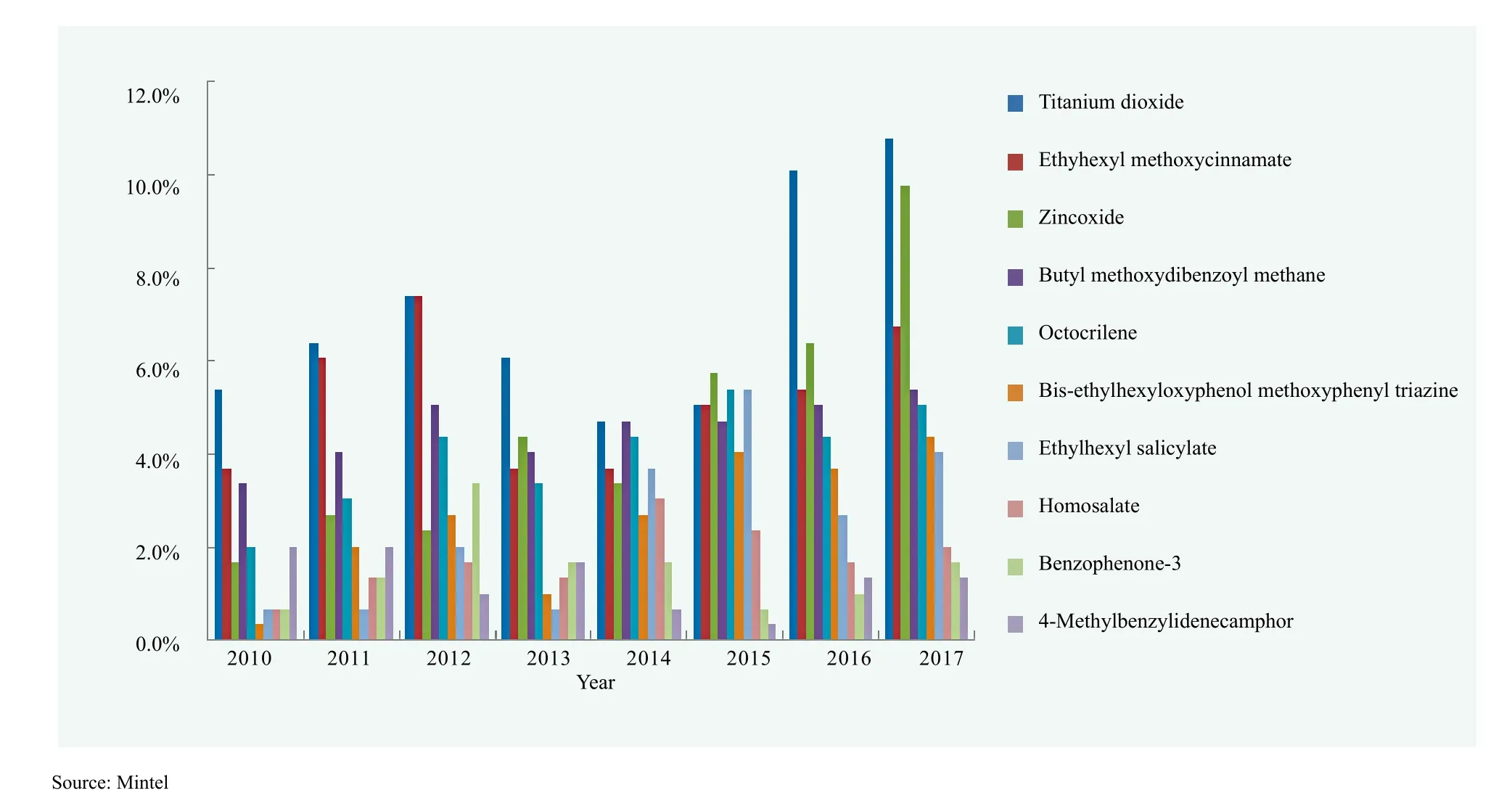
Figure 2. Percentage of Top 10 UV filters used in baby suncare cosmetics each year, 2010 ~ 2017
Principles of the matching of sunscreen agents
The below principles can be followed in the matching of sunscreening agents for the sunscreen cosmetics for children.
First of all, water soluble sunscreen agents should be used together with oil soluble sunscreen agents. As most sunscreen agents are oil soluble with high-index O/W type of sunscreen products, which make the skin feel sticky,thick and heavy. Research finds that there are certain protection loopholes[10]in the use of aqueous phase of O/W sunscreen products produced with traditional oil soluble sunscreen agents and using water soluble sunscreen agents with them can fill in the protection loopholes and increase sunscreen index, and it also could reduce the dosgae of oil soluble sunscreen agents to improve the sticky, thick and heavy feeling of the skin;finally, with fixed target sunscreen value, the overall usage of sunscreen agents can be reduced, and could alsolower potential irritation risks, so they are more comfortable for children. In recent years, more and more water soluble UVB sunscreen agent such as phenyl benzimidazole sulfonic acid and UVA sunscreen agent such as phenyl dibenzimidazole tetrasulfonate disodium are used widely.
Secondly, physical sunscreen agents should be used together with chemical sunscreen agents. As there are only a few sunscreen agents that can be used for sunscreen products for children, it is not easy to achieve SPF50+PA+++ by using chemical sunscreening agents long, Therefore, in terms of the design of formula, it is better to try to use chemical sunscreen agents with physical sunscreen agents. The addition of physical sunscreen agents can effectively help increase SPF and also reduce the greasiness of the material.
Thirdly, synergy principle. Appropriate sunscreen agent matching can significantly improve sunscreen effect. According to the research data of BASF Company,the compound matching of low-dosage diethylhexoxy phenol methyloxyphenyl triazine and ethyl hexyl methoxy cinnamate can effectively increase comprehensive SPF.
Fourthly, the compatibleness of sunscreen agents is also an important aspect that needs to be considered.As there are many articles on the compatibleness of sunscreen agents, not to touch more here.
Selection of other components
Selection of grease. The selection of grease for sunscreen cosmetics for children should follow the principle of choosing mild, nonirritating grease with long history of safe application. Secondly, should choose grease with high solubility to sunscreen agents, ensuring the longterm stability of the material. Besides, choosing grease with good spread ability can help with the spread of sunscreen agents on the skin and provide better skin feeling.
Selection of emulsifiers. The main principle for the selection of emulsifiers for sunscreen products for children should be safety and with low dosage. Better to choose safe emulsifiers and try to reduce the dosage as much as possible, ensuring the safety and mildness of products.
Water-resistant design. Certain water-resistant designs are suggested to be added for outdoor sunscreen cosmetics for children with high SPF. Water-resistant design can be realized through W/O dosage form, increasing the proportion of oil phase, using oil soluble sunscreen agents,choosing oleophilic emulsifiers and adding film-forming agents among other measures.
The use of soothing agents. Due to the special features of children’s skin, certain soothing ingredients such as natural bisabolol can be added to the formula design of sunscreen cosmetics for children to reduce potential irritation.
Use of disputable raw materials
Due to the special feature of the objects of the use of sunscreen cosmetics for children, CFDA is rather strict with the trial of the special record of such types of products.
Given our company’s experience in reporting such types of products, in terms of the design of formula of sunscreen cosmetics for children, it is better to not use disputable raw materials such as benzophenone sunscreen agent, silica and unnecessary declarative additives.Complete data support such as security test data, legal limits, safe application history and relevant literature also needs to be provided.
Summary
The article briefs the key points in the development of sunscreen cosmetics for children but could not touch everything. A good type of sunscreen cosmetics for children needs to undergo stability test, animal toxicology test, patch test, photo-toxicity test, UVA and UVB protective effect test among a series of tests after the completion of formula design. In the end, it still needs long-term test of the market.
With the increase in people’s recognition of children’s sun protection, it is believed that sunscreen cosmetics for children will become an important component in the cosmetics in the future.
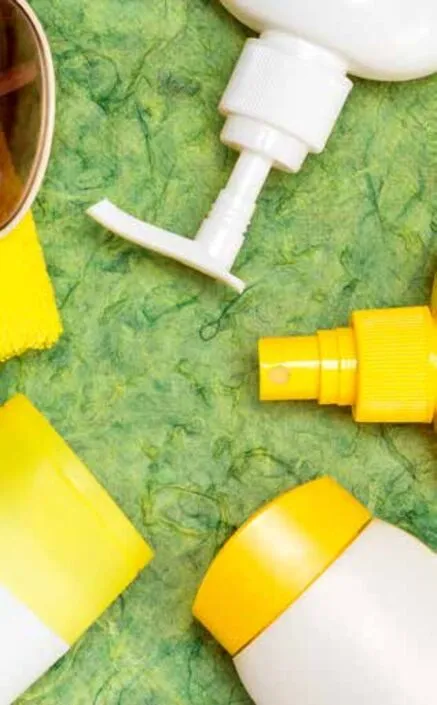
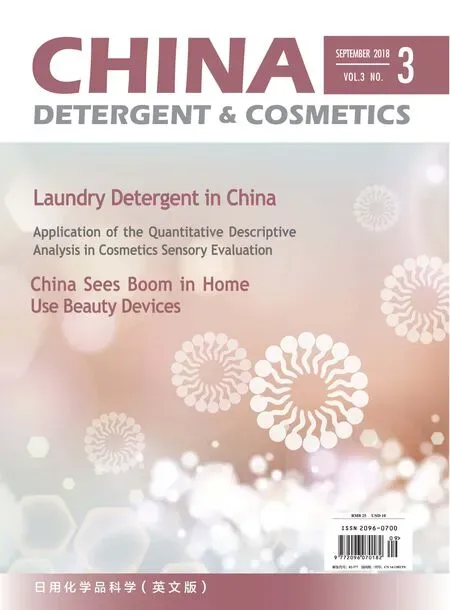 China Detergent & Cosmetics2018年3期
China Detergent & Cosmetics2018年3期
- China Detergent & Cosmetics的其它文章
- Major Industry Events
- Simultaneous Determination of Six UV-Filters in Cosmetics by HPL C
- Clinical Study on the Anti-Aging Effect of A Cream Containing Ginseng Root Extract and L-Carnosine
- Enhanced Solubilization and Stability of Resveratrol in Cosmetic Applications
- Application of the Quantitative Descriptive Analysis in Cosmetics Sensory Evaluation
- New process for the synthesis of a sun-screening agent isooctyl P-methoxy cinnamate
